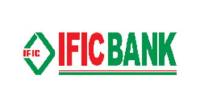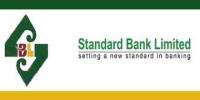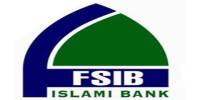Bangladesh Bank: The Regulatory Body
The Bangladesh Bank is the country’s central bank and is responsible for issuing and maintaining the value of the currency. It oversees the banking system and implements the government’s financial and monetary policies. With the exception of foreign banks, Bangladesh’s banking system was government-owned until 1982. The government is increasingly allowing more private commercial and investment banks to increase competition. Of the 52 licensed banks in June 2001, four were nationalized commercial banks, five were specialized banks, 30 were private commercial banks, and 13 were foreign banks. Other financial institutions, such as the Industrial Promotion and Development Company of Bangladesh, take an active part in financing industrial projects. The functions and responsibilities of the Bangladesh Bank are not clearly defined, and it lacks autonomy in such core areas as the licensing of new banks, monetary and exchange rate policies, and supervision of the nationalized commercial banks, which together account for over 50% of both total deposits and lending. Although major policy reforms have been undertaken during the past few years, including deregulation of interest rates, strengthening of standards of loan classification and provisioning, and elimination of the Bangladesh Bank’s control over most financial transactions, the financial sector continues to be underdeveloped and inefficient.
There are two bourses in Bangladesh: the Dhaka Stock Exchange (DSE) and the Chittagong Stock Exchange (CSE). The Securities and Exchange Commission (SEC) is the market watchdog but has been criticized for weak governance. Allegations of insider trading continue to affect investor confidence. There are less than 250 listed companies and turnover and liquidity are low. A stock market bubble was created by manipulation of the stock markets in July-November 1996 and the DSE all-share index peaked at 3,600 in November 1996. The index has been trading in a range of 540-670 in the last few years. The ratio of market capitalization to GDP is now less than
3% and is small compared to other countries in the region. Automated online real-time screen-based trading was launched in 1998. The DSE-20 price index, which lists the largest companies, was launched in January 2001.
Industry Analysis
According to Hill, “An Industry can be defined as a group of companies offering products or services that are close substitutes for each other.” Close substitutes here refers to products or services that satisfy the same basic consumer needs. In order to understand an entity’s business, one needs to take a closer look at the industry where the entity is operating. Here, the banking industry of Bangladesh will be analyzed through the usage of two models, namely Porter’s Five Forces Model and the Industry Life Cycle Model.
The Industry Life Cycle Model
The industry life cycle model is a useful tool for analyzing the effects of an industry’s evolution on competitive forces. Using this model, we can identify five industry environments, each linked to a distinct stage of an industry’s evolution. The stages are:
- Embryonic Industry Environment
- Growth Industry Environment
- Shakeout Industry Environment
- Mature Industry Environment
- Declining Industry Environment
It is very important for a business entity to have a clear idea regarding the industry life cycle. Each stage of the life cycle requires unique and differentiated strategy formulation. If we analyze all the characteristics of the life cycle model, we can see that the banking industry of Bangladesh is in its growth stage. However, the shakeout stage does not seem too far a reality. Some of the characteristics of the shakeout stage are already evident.
In the growth stage, the demand for the industry’s product begins to take off. It is quite evident that the demand for banking services in Bangladesh has increased gradually, throughout the years. The increasing number of banks and their differentiated offerings bolsters this fact. Rivalry among the competing banks is getting intense, day by day. However, the rivalry among competitors in a typical growth industry is low. High rivalry begins at the shakeout stage. However, many authors do not distinguish between these two stages. The justification of low rivalry among companies is that all of them keep themselves indulged in market share building. As demand is ample and supply is comparatively low, anyone can enter the market and get their share of the profit. Banks in our country passed through that stage, and now the market is shrinking day by day. The growth rate has fallen, and slowly the demand is approaching the saturation point. Most banks have prepared themselves for the intense competition which is the core characteristic of the shakeout stage. It is expected that interest rates and service charges for the different banking services will sharply decline in the coming years.
Porter’s Five Forces Model
The model focuses on five forces that shape competition within an industry:
- The Risk of New Entry by Potential Competitors
- The Degree of Rivalry Among Established Companies Within an Industry
- The Bargaining Power of Buyers
- The Bargaining Power of Suppliers
- The Threat of Substitute Products
Porter argues that the stronger each of these forces is, the more limited is the ability of established companies to raise prices and earn greater profits. Thus, a strong competitive force can be regarded as a threat since it depresses profit. Similarly, a weak competitive force can be viewed as an opportunity, for it allows a company to earn greater profits.
Potential Competitors
Potential competitors are companies that are not currently competing in an industry but have the capability to do so if they choose. The banking industry in our country is still in its growth stage. So the threat of potential entrants is quite high. Usually the existing companies try to deter potential competitors by setting certain entry barriers. Barriers to entry are factors that make it costly for companies to enter an industry. The common barriers to entry are Brand Loyalty, Absolute Cost Advantage, Economies of Scale and Government Regulations. In Bangladesh, the question of Brand Loyalty is somewhat evident in the banking industry. A person who is a loyal customer of a local or government owned bank usually does not opt for an account in a multinational bank, whatever lucrative the benefits seem. This creates barriers for new entrants. No bank enjoys an absolute cost advantage, due to the fragmented nature of the industry. “Fragmented” industry and its attributes will be discussed in the following section. Most of the government banks and some local banks enjoy scale of economy; due to the fact that they have been doing business for quite a long time, and they have branches all over the country. The multinational banks are also on the process of achieving scale of economy. The increasing number of branches supports this statement. Government regulation is quite supportive towards the formation and operation of new banks. So this factor is not a significant entry barrier in this sector.
Rivalry Among Established Companies
The second of Porter’s five competitive forces is the extent of rivalry among established companies within an industry. If this rivalry is weak, companies have an opportunity to raise prices and earn greater profits. If rivalry is weak, companies have an opportunity to raise prices and earn greater profits. The extent of rivalry among established companies within an industry is largely a function of three factors:
a) The industry’s competitive structure
b) Demand conditions
c) The height of exit barriers in the industry
a) The Competitive Structure
Competitive structure refers to the number and size distribution of companies in an industry. Structures vary from fragmented to consolidated and have different implications for rivalry. A fragmented industry contains a large number of small or medium-sized companies, none of which is in a position to dominate the industry. A consolidated industry may be dominated by a small number of large companies (oligopoly) or in extreme cases, by just one company (a monopoly). In many countries, banking is a consolidated industry, with a few major players in the market. But in our country, the industry is very much consolidated, as a whole.
The prime characteristics of a fragmented industry are low entry barriers and identical product offering from the firms. Such is the case in our banking industry. Banks operate with pre-fixed and unanimously agreed interest rates, and their offerings are somewhat identical. The only way to differentiate product offerings from those of the competitors is to lower prices. Such phenomenon occurs as new entrants flood into a booming fragmented industry. This also creates excess capacity. A vicious price war is usually followed by the situation of excess capacity. It can be expected that our banking industry will experience severe price cuts in the following years. As a whole, a fragmented industry increases competition, and it also depresses overall industrial profitability.
b) Demand Conditions:
An industry’s demand conditions are another determinant of the intensity of rivalry among established companies. Growing demand from either new customers or additional purchases by existing customers tends to moderate competition by providing greater room for expansion. Growing demand tends to reduce the rivalry because all companies can sell more without taking market share away from other companies. In the case of banking, the demand has been growing at a satisfactory rate, throughout the last decade. However, it is not certain whether the trend will sustain or not.
c) Exit Barriers
Exit barriers are economic, strategic and emotional factors that keep companies in an industry even when returns are low. If exit barriers are high, companies can become locked into an unprofitable industry in which overall demand is static or declining. The common exit barriers are:
i. Investment in plant and equipment that have no alternative uses and cannot be sold off.
ii. High fixed costs of exit
iii. Emotional attachments to an industry
iv. Economic dependence on the industry
In order to keep up-to-date with today’s complicated banking practices, a bank needs to invest on computers, software, secured vaults, security systems and different other controlling and monitoring measures. Most of these assets are customized, and therefore serves the purposes of the intended organization, only. This customization nullifies the resell value of these assets.
High fixed costs of exit can appear in the form of employee severance payments, and also in the form of government penalties, etc.
Many local banks of our country have become part of our everyday lives. They had been their since our ancestors were born. Thus many people, both within the government and the mass have emotional attachments with these banks. This acts as a serious exit barrier for these banks. So, in spite of being highly inefficient and loss bearing, some banks are still operating.
Some banks are so big that shutting any of them will give a serious blow to our foreign and domestic trade. Such an occurrence can impact the whole economy.
Buyer and Supplier Defined
In a typical industry, the buyers are the customers that avail the offerings from the incumbent firms. On the other hand, suppliers are the firms that provide raw materials for the producers. Using their raw materials, the firms produce goods and sell it to the customers. This is a typical buyer-seller scenario. However, the banking industry is a bit different from a typical industry. The two major functions of a bank are providing money depositing facilities and loan facilities. When a person takes a loan from a bank, he is a buyer. However, when he deposits his money to the same bank, he becomes the supplier. Thus the same individual can become the buyer and seller, simultaneously. The directors of a bank are also suppliers for that particular bank.
The Bargaining Power of Buyers
Bargaining power of the buyer can be viewed as a competitive threat when they are in a position to demand lower prices from the company or when they are in a position to demand better service that can increase operating costs. On the other hand, when buyers are weak, a company can raise its prices and earn greater profits. For the banking industry buyer means customers who take loan from the banks. The bargaining power of the buyers depends on the following factors:
a) Number of Loan Applicants:
There are more than 50 banks in our banking sector including multinational and nationalized banks. There are not enough original business loan applicants in our country. Investment opportunities are not growing as well; for lots of other factors. So, banks are setting with their idle money for giving loans; mostly in the form of personal credits. As a result, competition for doing business is increasing day by day among established companies.
b) Switching Cost:
Switching cost is very low in banking industry. Every bank is giving the similar types of loan at similar interest rate. So, an individual who wants to take loan from banks can switch easily to other banks if he or she doesn’t like the terms and conditions. Customers of HSBC bank are switching to other banks because of low interest rate and lots of other reasons. Lower switching cost makes the industry more competitive.
c) Threat of Backward Integration:
In banking industry, there is always a chance for threat of backward integrations. Big multinational companies or corporations can give threats to the commercial banks that they will arrange their funds by forming another bank where the cost of fund is low compared to other banks. For this reason, giant customers of this industry always possess more power than their banks. However, the individual non-corporate clients do not possess this type of bargaining power.
The Bargaining Power of Suppliers
Bargaining power of suppliers can be viewed as a threat when the suppliers are capable of forcing up the price that a company must pay for its inputs or reduce the quality of the inputs they supply, thereby depressing the company’s profitability. On the other hand, if suppliers are weak, this gives the company the opportunity to force down prices and demand higher input quality. For the bank the main supplier of fund is the depositor. Bank also gets its funds from the directors. So, the strength of the suppliers depends on the following factors:
a) Number of Supplier:
Bargaining power of the fund suppliers is low in banking industry because there are lots of individual savings in the economy but banks don’t have too many opportunities for investment.
b) Threat of Forward Integration:
Sometimes suppliers of funds can give threat to the bank as well. Corporations or big multinational companies can give threat to the private bank that they will form another bank for depositing their money. They will not supply any fund to other banks. We all know that bank makes money by investing other’s money. So, this can lead to a higher competition in procurement of fund.
The Threat of Substitute Products
The final force in Porter’s model is the threat of substitute products. Substitute products are those of industries that serve consumer needs in a way that is similar to those being served by the industry being analyzed. Loans, the major banking product, have some substitutes. All informal sources and channels of financing are treated as viable substitutes. Some wealthy individuals, whom are often usurers as well, lend out money at a very high interest rates. These loans do not often require securities, and also do not require any special conditions, e.g. age, certain service time, set monthly income, etc. which makes them a very lucrative option. However, most of these activities are illegal, and therefore bears high risk. For this reason, most people tend to avoid these channels. Thus it appears that the threat of substitute products is not that much prevalent in the banking sector of Bangladesh, till date.
Role of Macroeconomic Environment
The banking industry is not a self-contained entity. It is embedded in a wider macro environment—the broader economic, technological, social, demographic and political environment. Changes in the macroenvironment can have a direct impact on the banking sector, improving or deteriorating the profitability of the sector, permanently or temporarily.
The Macroeconomic Environment
The state of the macroeconomic environment determines the general health and well-being of the economy. This in turn affects a company’s ability to earn an adequate rate of return. The four most important factors in the macroeconomy are:
a) The growth rate of the economy
b) Interest rates
c) Currency exchange rates
d) Inflation rates
If the growth rate of the economy is high, consumer expenditure increases, which helps most businesses. However, the growth rate of our economy is moderate, which provides moderate opportunities for the banks to expand their operations and earn higher profits.
Interest rate is very significant for the banking industry. At the moment, interest rate is quite high in our country, compared to neighboring countries. Most personal loans bear an interest rate of at least 12 to 14% and above. This high interest rate is increasing the short term profitability of the industry, but in the long run, it is also acting as a hindrance towards building a better customer base.
Movement in currency exchange rates has a direct impact on the competitiveness of a company’s product, especially in the global market place. Providing “Trade Services”, e.g. processing export-import documents, maintaining export and import formalities, etc. is a major business of the country’s banks. Thus the exchange rates of the major currencies, e.g. dollar; euro, pound sterling, etc. have a direct impact on the banking industry.
Inflation can destabilize the economy, producing slower economic growth, higher interest rates, and volatile currency movements. Throughout the last decade, the inflation rate has come under control in our country, making its detrimental effects less significant. Thus the banking industry is not experiencing that much of difficulties due to inflation.
The Technological Environment:
Technological changes can act as a barrier to entry in an industry. Previously, the usage of computers and electronic databases were unknown to most people of our country. But the scenario has changed a lot in the last 8 to 10 years. After the elimination of duties on computers and accessories, the price of personal computers fell sharply. This created a boom in the computer industry. Most households in Dhaka now have at least one personal computer. Nowadays, people expect swift, hassle free service from the banks. Even the old and nationalized banks are realizing this fact. Installing all the modern banking equipments and computer systems can result in high fixed costs. Thus technological environment acts as a serious hindrance for entrepreneurs to setup their own banks, in our country.
The Social Environment
As with technological change, social change creates opportunities and threats. Due to changes in cultural values and education, people trust the banks more than ever. Previously, bank loans were perceived as a mean of getting bankrupt—through paying excessive interests. But today’s 4 years installment personal loans are gaining popularity. Borrowers are still paying interests, but they are not being compelled to live with the loan burden for 10 to 15 years—it’s all over within a brief time frame. All these factors are contributing positively towards the banking industry.
The Demographic Environment
Currently, individuals are getting established at a younger age. These individuals are the prime targets of many of the banking services like credit cards, personal loans, etc. Being younger in age, these individuals tend to spend more in luxury items, and they need to take loans in order to fulfill their desires. Realizing this opportunity, the banks cleverly brought out different loan schemes. This change in demographic environment has proven to be a great opportunity for the banks operating in Bangladesh.
The Political and Legal Environment
The political and legal environment of Bangladesh has never been impressive. This volatile environment creates a lot of difficulties for banks. Due to lack of law enforcement, the percentage of defaulted business loans had been historically high in our country. American Express Bank was compelled to shut down their corporate banking due to high number of defaulted loans. They simply got fed up while dealing with such troublesome customers. It is easy to recover loan money from small customers than from big businessmen—who are generally favored by the corrupt law enforcement agents of our country. This has become a very frustrating scenario for both the banks and for those people who genuinely need money for doing business. Neither party can fully trust the other. Unwanted strikes, hartals and political unrests have harmed the business of the banks as well. If the political and legal environment does not improve significantly, the banking industry’s performance will definitely be below par, in future.
The Concept of Strategic Groups Within Industries
All firms within a certain industry do not act similarly, in most cases. They differ in terms of distribution channels, served market segments, product quality, technological leadership, customer service, pricing policy, advertising policy and promotions. As a result of these differences within most industries, it is possible to observe groups of companies in which each member follows the same basic strategy as other companies in the group but follows a different strategy than that of companies in other groups. These groups of companies are known as strategic groups.
Proprietary Group and Generic Group
There can be two types of strategic groups in a particular industry. One group spends a lot of resources in research and development. They bring out new products and services in order to attract customers. In the banking industry, the multinational banks like HSBC, Standard Chartered and also a few local banks like Eastern Bank, Dhaka Bank, etc. follow such a strategy.
This group is called the Proprietary Group. Banks that belong to this group pursue a high-risk/high-return strategy. The prices charged by these banks for their services are generally higher, which is apparent from the diagram shown above. They bear high risk, because their high R&D spending may bear no fruit. There is no guarantee that heavily researched and pre-tested products will do well in the market. What a bank believes to be a premium service might appeal the least to the customers. However, when a product does become popular, it usually brings a lot of fortune for the firm, mainly due to the premium price attached with it. These banks also devote a lot of resources in adopting new technology. That is why we see banks like HSBC to be fully equipped with the latest banking software as well as with the finest and fastest PCs, teller machines, vaults and security systems.
On the other hand, there are a number of banks who adopt a strategy which is totally different from what is adopted by the banks of the proprietary group. These banks belong to the generic group. The name suggests that, these banks will be generic in nature. They believe in providing no frills, traditional banking services. They are reluctant in spending high amounts in research and development. They are often the followers of what other banks adopt after doing research. They almost never equip themselves with the latest technologies. They use five years old technology, which is cheaper, yet functional. Understandably, the price charged by these banks is quite lower than the same of the proprietary banks. Their target market is totally different. While the minimum average account balance in HSBC bank is 50,000 Taka, one can maintain a zero balance and still have his account active in a generic bank.
Implications of Strategic Groups
Strategic groups help in defining the true competitive picture of an industry. Though belonging to the same industry, all banks do not compete against each other, directly. For this reason, HSBC does not have to position itself against the government banks.
Mobility Barriers within Strategic Groups
There are mobility barriers within the strategic groups. That is, a bank belonging to the generic group cannot just move itself up to the proprietary group, overnight. There are high mobility barriers in the banking industry of Bangladesh. This means, banks within a given group are protected to a greater extent from the threat of entry by banks based in other strategic groups.
















